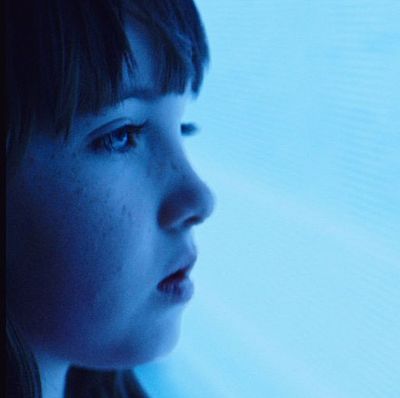
Call off the bomb threats. The new┬áPoltergeist┬áis not the raging hellfire of sacrilege many of us feared it might be. This reboot of Tobe Hooper and Steven SpielbergÔÇÖs 1982 horror classic seemed like a bad idea from the start. The original, about a little girl sucked into a television set by ghosts from the beyond, played on the weirdly unsettling phenomenon of TV white noise. To those of us who grew up in the age of the cathode ray, that blast of blank sound and static overload felt like a time bomb waiting in the family boob tube. But itÔÇÖs largely absent in todayÔÇÖs HDTV world. Plus, the earlier filmÔÇÖs greatness may even have been something of an accident ÔÇö a result of the fortuitous, though at the time reportedly quite contentious, conflict between HooperÔÇÖs go-for-broke nihilism and SpielbergÔÇÖs paeans to suburbia. Besides, if youÔÇÖre going to remake┬áPoltergeist┬áwithout the whole TV angle,┬áInsidious┬áalready kind of did that.
To be fair, this new Poltergeist isnÔÇÖt anything special, either. But itÔÇÖs not a travesty, and that feels like cause for brief celebration. Director Gil Kenan (Monster House) and writer David Lindsay-Abaire (The Rise of the Guardians) invest the film with enough life to keep us interested. TheyÔÇÖre lucky, of course, to be working with Sam Rockwell and Rosemarie DeWitt, playing Eric and Amy Bowen, who, with their three kids ÔÇö anxious Griffin (Kyle Catlett), impressionable Maddy (Kennedi Clements), and jaded teen Kendra (Saxon Sharbino) ÔÇö have just downsized to a neighborhood that, like them, is experiencing hard times.
If the original Poltergeist was about the hustle and bustle of the modern American suburb in the 1980s ÔÇö with all its tribal rituals and petty grievances ÔÇö this new one plays off the desolation of that same suburb. Foreclosures have left the BowensÔÇÖ new neighborhood empty, weÔÇÖre told. Eric has just been laid off from his job at John Deere, and Amy, who had dreams of being a writer, has her hands full with the kids. In other words, the phantoms tormenting our protagonists this time around donÔÇÖt represent the underbelly of the American dream; instead, theyÔÇÖre yet another indignity visited upon a dying middle class.
ThatÔÇÖs an interesting way to update the original film. (Though not particularly novel. The real-estate crash and the financial crisis have fueled an impressive number of horror movies, it seems.)┬áMeanwhile, Rockwell and DeWitt have fun with the scriptÔÇÖs lively intrafamilial banter, as they try to deal with GriffinÔÇÖs paralyzing fears and KendraÔÇÖs constant complaining. It helps that the kids have each been given distinctive personalities, all of which come into play when the fireworks start.
Those fireworks come quickly, as the film settles into a groove that borrows heavily from the original. The house exudes strange electrical portents. Griffin is tormented by a box filled with terrifying clown toys, and a willow tree that hovers above his attic-room window. Then Maddy, who had been having odd conversations with her closet and with the TV set, is pulled into the wall and vanishes. Having witnessed this madness, the Bowens turn to a paranormal researcher (Jane Adams), who with her team starts to record and analyze just what exactly is happening. To replace the role of the psychic from the earlier film, this time we have Jared Harris playing a flamboyant reality-show host, and looking like heÔÇÖs having the time of his life.
Alas, were still supposed to be watching a horror movie, and this new Poltergeist isnt particularly scary. When we do jump, its usually because the film is replicating or revising a scare from the original film, which is fun at first but loses its charm after the third or fourth time. The original Poltergeist worked in part because it brought a sense of wonder to the gritty world of horror. It was a landmark in fusing the genre with the eye-popping F/X work Spielbergs films had popularized  E.T. meets The Amityville Horror. (Thats also why, I think, it pissed off some purists at the time  it made the genre safe for kids.) Here, the pyrotechnics are mostly functional, and not particularly notable. Yes, our new, highly technologized world fits right into the Poltergeist narrative; this time, instead of just the TV, the technological gateways to the beyond are all around us. (When Maddy does do the iconic stare-at-the-TV-and-croak-Theeyre heeere thing, its mostly a passing nod.) The malevolent force fields surround our characters; tablets and cell phones go haywire and start acting like Geiger counters. Interesting, perhaps  but not interesting enough. This new Poltergeist may not be an embarrassment, but that aforementioned wonder is gone this time out. What was once so distinctive now feels thoroughly boilerplate.


